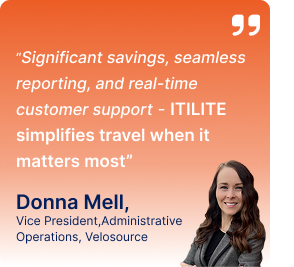1. Why Project-Wise Cost Allocation Matters in Nonprofits
In today’s nonprofit landscape, leaders across finance, development, and HR are under growing pressure to demonstrate accountability, impact, and fiscal responsibility. Whether you’re reporting to a grantor, preparing for an audit, or planning for the next funding cycle, understanding where each dollar goes, and why, is critical.
Project-wise cost allocation is not just a finance exercise. It’s a strategic practice that drives smarter decision-making, enhances donor trust, and ensures mission alignment. Here’s why it matters:
a. Mission Integrity & Accountability
At the heart of every nonprofit is a mission. But without knowing the true cost of delivering each program, it’s difficult to assess whether resources are being used effectively – or even if a program is sustainable long-term.
For finance teams, cost allocation enables a clear line of sight between funding and impact. For development managers, it helps articulate the real value of programs when making the case to donors. And for HR leaders, it ensures staffing is aligned with actual needs, not assumptions.
In short, tracking and allocating costs by program ensures that every initiative is truly advancing your mission- and doing so efficiently.
b. Transparency & Donor Confidence
Donors, foundations, and government agencies increasingly demand granular, project-specific reporting. They want to know how their contributions are used – not just at the organizational level, but within the specific programs or outcomes they’re funding.
Effective cost allocation helps:
- Accurately report program vs. overhead spending.
- Provide funders with detailed, credible financials.
- Avoid the perception of mismanagement or inefficiency.
Whether submitting a grant proposal or an IRS Form 990, having reliable allocation practices in place builds credibility and long-term donor trust.
c. Compliance & Risk Mitigation
Many funders have strict rules around how their funds are used. Misallocating expenses whether by accident or oversight can lead to:
- Audit findings.
- Repayment demands.
- Grant disqualification.
Nonprofits that don’t properly track and allocate costs risk violating funder agreements or IRS regulations, exposing themselves to serious legal and reputational risks. A clear cost allocation system helps avoid these pitfalls by ensuring expenses are documented, categorized, and assigned appropriately.
d. Informed Decision-Making
When nonprofit leaders have accurate data on the full cost of each program – including overhead – they can:
- Prioritize which programs to expand or sunset.
- Allocate staff and resources more effectively.
- Negotiate grants or contracts with realistic budgets.
Cost allocation turns financial data into strategic insight. It allows HR to plan staffing around actual program demands, finance teams to build more accurate forecasts, and development professionals to pursue funding that truly supports organizational needs.
2. The Core Components of Cost Allocation
For nonprofits to manage their resources with precision, cost allocation must go beyond simple line-item budgeting. It requires a structured framework that clearly defines programs, classifies expenses properly, and distinguishes between direct and indirect costs.
This section outlines the foundational elements that finance professionals, development leaders, and HR managers need to get right from the start.
a. Define Your Programs
Before you can allocate costs, you must clearly define your programs. Think of each program as a distinct unit of mission delivery – whether it’s a service, initiative, campaign, or geographic region.
By separating activities into identifiable programs, your organization can:
- Assign budgets and staff more accurately.
- Track performance and impact more meaningfully.
- Report on outcomes at the level that funders care about.
📌 Tip: Group similar activities under common program umbrellas, but avoid being too broad – clarity here sets the stage for accurate cost tracking.
b. Classify Expenses Appropriately
Nonprofits are required—by accounting standards and IRS regulations—to classify expenses into three major categories:
- Program Service Expenses
These are the direct costs of delivering services or fulfilling the mission. Examples include program staff salaries, supplies used during service delivery, transportation for clients, and other resources used exclusively by a specific program. - Management and General (Administrative) Expenses
These support the organization as a whole. Think finance, HR, IT, executive leadership, and governance. While they don’t directly advance the mission, they’re necessary for infrastructure and compliance. - Fundraising Expenses
Costs tied to securing revenue, such as donor communications, fundraising staff salaries, CRM software, and events.
🎯 Getting this classification right is essential for accurate reporting, especially on Form 990 and grant submissions. It also helps stakeholders assess how efficiently you’re using donor dollars.
c. Understand Direct vs. Indirect Costs
A cornerstone of cost allocation is recognizing the difference between direct and indirect costs – and knowing how to handle each.
🔹 Direct Costs
These can be traced directly to a specific program. They’re usually easy to assign and include:
- Program staff wages.
- Supplies used exclusively in a program.
- Travel for a specific program initiative.
- Training required for program delivery.
🔹 Indirect Costs
These are shared across the organization and cannot be tied to a single program without an allocation method. Examples include:
- Rent and utilities.
- Administrative staff time (e.g., HR, accounting).
- General office supplies.
- Insurance, IT infrastructure, legal services.
To ensure transparency and compliance, indirect costs must be allocated using a reasonable, consistent methodology, which we’ll explore in detail in the next section.
Accurate classification and cost separation are the building blocks for effective nonprofit financial management. Once your programs are defined and your expenses are categorized, your organization is ready to begin allocating costs using defensible and auditable methods.
3. Key Steps to Effective Cost Allocation
With your programs clearly defined and your expenses categorized, it’s time to put cost allocation into action. This process isn’t just about compliance – done well, it gives your leadership team the financial clarity to make smart, strategic decisions.
Below are the key steps every nonprofit should follow to build a robust, transparent, and adaptable cost allocation framework.
a. Budgeting and Forecasting by Program
Start with program-specific budgets. Each program should have a detailed plan that includes:
- Expected revenue (e.g., restricted grants, program fees).
- Direct expenses (e.g., salaries, materials).
- Allocated indirect costs (e.g., admin support, rent).
This allows finance teams to:
- Compare actual vs. projected performance.
- Identify potential funding gaps early.
- Guide development managers in fundraising priorities.
📌 Tip: Tie your budgeting process to your strategic plan. Programs without sustainable funding models or cost recovery plans may need restructuring.
b. Set Up Your Accounting System for Program Tracking
Your chart of accounts and financial software should support program-based accounting. This means:
- Assigning cost centers or tracking codes to each program.
- Separating admin and fundraising functions from programmatic costs.
- Ensuring you can produce segmented reports for internal analysis, audits, and grant reporting.
Popular nonprofit accounting platforms like QuickBooks Nonprofit, Aplos, and Sage Intacct make this easier by offering class or fund tracking features.
🎯 For organizations required to file IRS Form 990, this structure is essential to demonstrate how resources are spent across program, admin, and fundraising categories.
c. Choose a Suitable Allocation Method
Indirect costs need to be shared among programs using a reasonable, consistent methodology. Here are the most commonly used methods:
🔹 FTE (Full-Time Equivalent) or Staff Time
Allocate shared costs based on the percentage of time each employee spends on different programs.
- Ideal for organizations where personnel is the largest cost.
- Requires accurate time tracking or regular time studies.
🔹 Square Footage
Allocate facility-related costs (e.g., rent, utilities) based on the space each program occupies.
- Useful if different programs occupy separate physical locations or office spaces.
🔹 Percentage of Total Direct Costs
Distribute shared expenses proportionally, based on how much direct cost each program incurs.
- Best for organizations with balanced program size and complexity.
🔹 Labor Hours or Custom Drivers
For specialized needs, consider metrics like hours of service delivered, number of clients served, or resource usage.
- Requires more data tracking but can improve fairness in allocation.
⚖️ Choose a method that aligns with your organizational structure and ensures audit defensibility. Avoid using inconsistent methods across reporting periods.
d. Apply and Document Consistently
Once you select an allocation method:
- Apply it across all programs and reporting periods.
- Document the methodology in financial policies.
- Maintain supporting records such as time logs, floor plans, or allocation schedules.
This consistency not only strengthens your internal controls but also:
- Makes your organization audit-ready.
- Demonstrates compliance to funders.
- Supports future grant negotiations, especially when negotiating indirect cost rates.
e. Review and Adjust Periodically
Cost structures and program activities evolve. Your allocation method should too.
Conduct regular reviews:
- Quarterly or biannually for growing organizations.
- Whenever there are significant changes in staffing, space usage, or program delivery models.
Adjust your methodology as needed to maintain fairness and accuracy—but always document the rationale for changes.
🧭 Think of cost allocation as a living process—not a one-time setup. It should evolve with your organization’s scale, strategy, and structure.
Implementing these steps not only strengthens financial accountability, but also positions your nonprofit for greater agility, sustainability, and trustworthiness in the eyes of funders, regulators, and your internal team.
4. Common Pitfalls and What’s at Stake
Even with the best intentions, nonprofit leaders can stumble when implementing or maintaining a cost allocation system. For finance professionals, development managers, and HR leaders, understanding these pitfalls is essential – not just for compliance, but to protect the organization’s mission, funding, and reputation.
Below are the most common missteps in cost monitoring and allocation – and the real-world risks they pose.
a. Compliance Risks and Grant Violations
Misallocating expenses or failing to document them properly can directly violate grant agreements or funder restrictions. This can result in:
- Audit findings that may require repayment of funds.
- Ineligibility for future grants.
- Loss of federal or restricted funding, especially for government-funded programs.
Funders often require detailed expense breakdowns. If your allocation methods are inconsistent or poorly documented, your nonprofit could be viewed as noncompliant—even if the money was used responsibly.
⚠️ Compliance issues are a top reason for grant clawbacks, particularly in federal funding streams.
b. Misuse of Funds and Reputational Damage
If a donor funds a program but their contribution is misapplied to administrative or unrelated costs—even accidentally—it can erode stakeholder trust and potentially spark public backlash.
Common triggers include:
- Misclassifying admin or fundraising costs as program expenses.
- Failing to track indirect costs properly.
- Reporting inflated program efficiency ratios.
These issues can cause donors to walk away, or worse, discourage others from supporting your mission.
💬 “Donors want to know their dollars make a direct impact. Even small reporting errors can undermine years of relationship-building.”
c. Unrecovered and Underreported Costs
Without accurate cost allocation—especially for indirect expenses—nonprofits often leave money on the table:
- Indirect costs go unreimbursed if they’re not properly tracked or justified.
- Grants may not cover the full cost of program delivery, leading to shortfalls that must be covered by unrestricted funds.
This creates chronic budget strain, forcing programs to operate below capacity, limit services, or reduce staff—despite appearing fully funded on paper.
📉 Underreporting costs to look leaner can actually undermine your long-term sustainability.
d. Poor Cash Flow and Resource Planning
Lack of precise cost data can cause cash flow mismanagement:
- Unexpected shortfalls due to underestimated expenses.
- Delayed vendor payments or missed payroll cycles.
- Ineffective budget forecasting and misguided fundraising goals.
When programs lack insight into their true cost structure, it becomes nearly impossible for HR or finance to allocate staff, adjust hiring plans, or manage seasonal funding cycles.
🔍 Without visibility into actual program costs, leaders are flying blind.
e. Leadership Blind Spots and Strategic Errors
When cost data is unreliable, leaders are more likely to:
- Invest in underperforming or unsustainable programs.
- Make cuts to critical infrastructure (e.g., HR, IT, compliance) to appear “lean”.
- Miss opportunities to scale programs that are effective and efficient.
This leads to misaligned priorities, wasted resources, and missed impact.
🧭 Strong cost data turns leadership intuition into informed strategy.
f. Staff Burnout and Infrastructure Decay
In an effort to keep reported overhead low, nonprofits often underinvest in staffing and operations. The result?
- Overworked teams.
- High turnover.
- Degraded institutional knowledge.
- Delayed reporting and financial errors.
Cost allocation done right justifies the true cost of doing the work well—including fair salaries, HR capacity, and administrative support.
💡 Low reported overhead isn’t always a sign of efficiency—it may signal under-resourced systems and staff burnout.
g. Lost Funding Opportunities
Many funders now require clear evidence of full cost coverage and strong financial controls. If your organization cannot:
- Provide reliable cost breakdowns.
- Justify indirect cost recovery.
- Demonstrate effective financial oversight
you may miss out on larger, multi-year, or federal grants.
🚫 Inadequate cost tracking isn’t just a risk—it’s a barrier to growth.
In sum, poor cost allocation and monitoring can put your nonprofit at risk of:
- Funding losses
- Compliance failures
- Weakened programs
- Damaged relationships with funders and stakeholders
Recognizing these pitfalls allows finance, HR, and development leaders to be proactive, not reactive—transforming cost allocation from a compliance headache into a powerful strategic asset.
Conclusion: Turning Cost Allocation into a Strategic Advantage
For nonprofit leaders in finance, development, and HR, project-wise cost allocation is far more than a back-office function—it’s the backbone of transparency, sustainability, and mission alignment.
When you:
- Define your programs clearly,
- Classify and separate costs accurately,
- Implement consistent allocation methods,
- Regularly review and refine your approach,
you equip your organization with the tools it needs to make confident, informed decisions. You build a culture of accountability. You strengthen relationships with donors and funders. Most importantly, you ensure that your limited resources are being used in the most effective and mission-driven way possible.
Failing to manage this process with care can lead to serious consequences: grant clawbacks, underfunded programs, cash flow problems, and loss of credibility. But when done right, cost allocation becomes a strategic asset—a way to tell a truthful, compelling financial story about the impact you’re making.
Ultimately, every dollar truly does count. And your ability to track, allocate, and justify those dollars is what will carry your organization—and its mission—into a more sustainable, impactful future.







